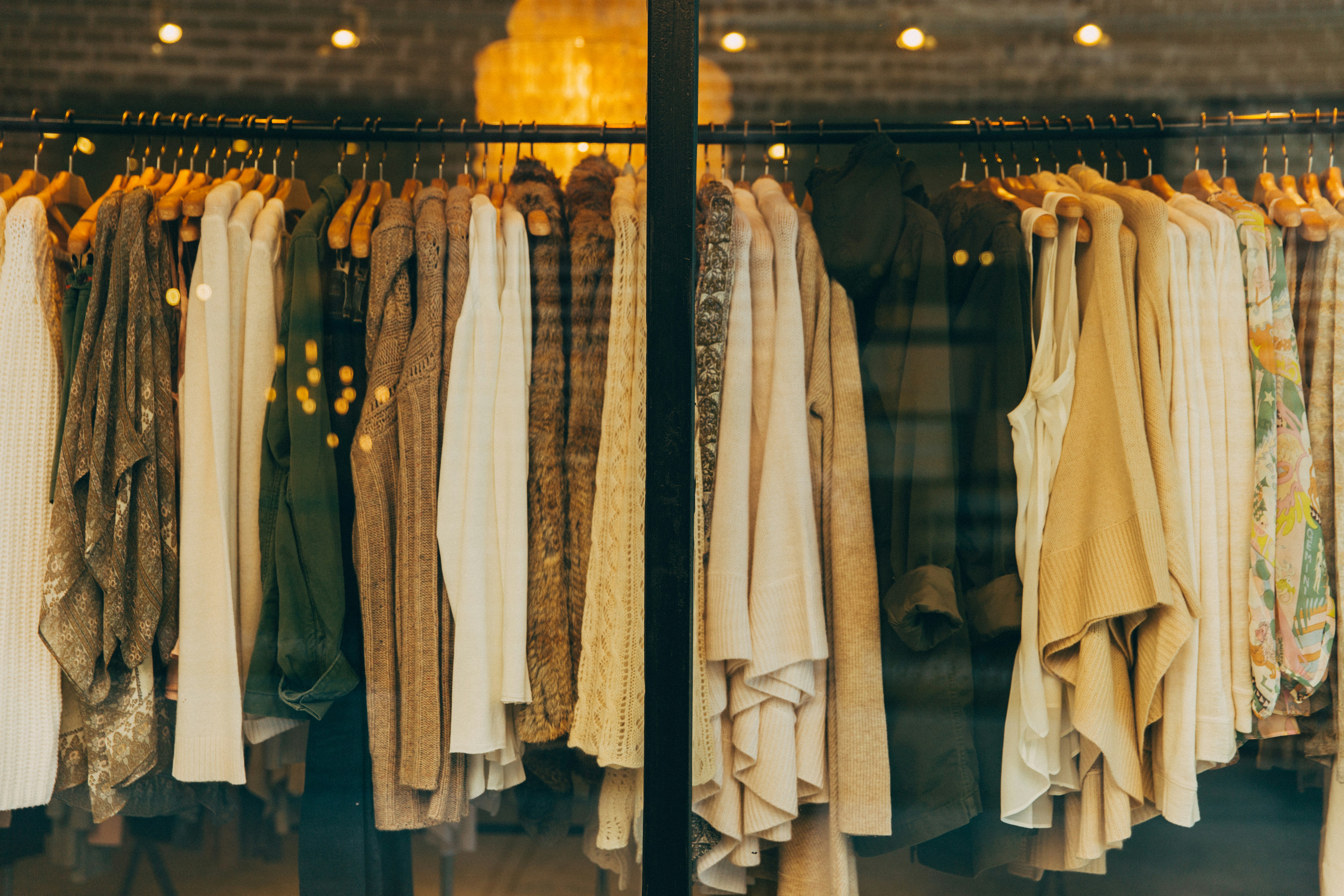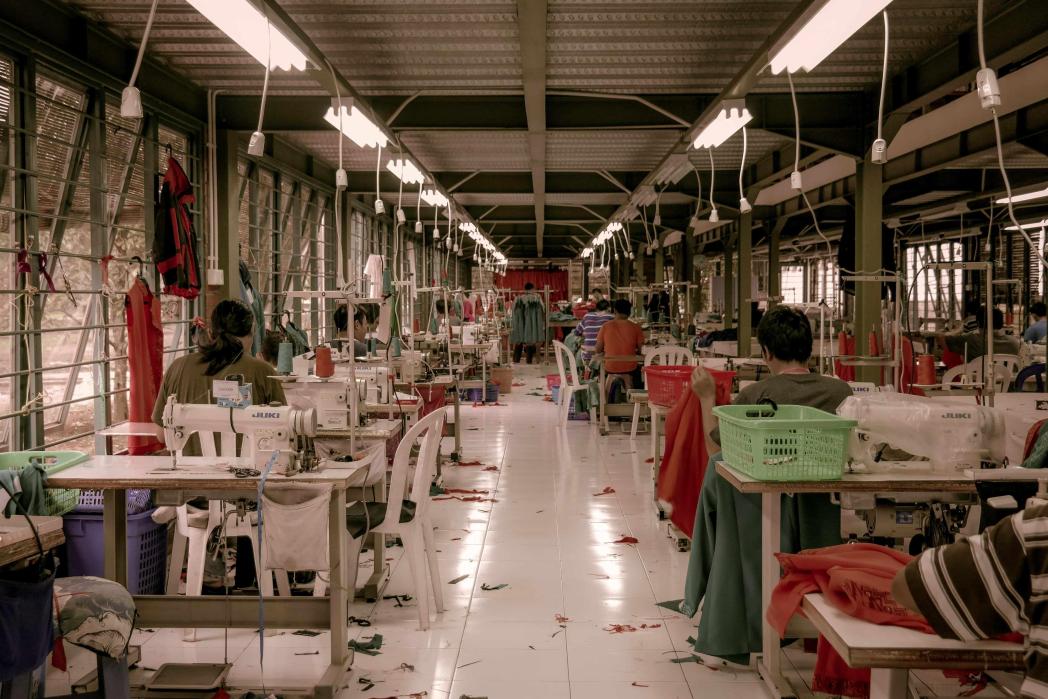
Fast fashion is the highly profitable global industry that mass-produces cheap, low-quality clothes and accessories. It continuously creates fashion trends and gets products ready for sale quickly.
Fast doesn’t last. Poor quality clothing may last only a few washes and wears, and increasingly consumers see fast fashion as disposable – to be worn a few times and replaced by the next inexpensive item or latest trend.
The industry strives to make production faster and cheaper, both creating and responding to consumer desire for new products in increasing quantities. And brands use data and tech to make online shopping ever more attractive. In the UK, we spend over £60.5 billion a year on clothing – just over 5% of our overall spending.[1]
Who is paying the price?
Fast fashion responds to and fuels our throwaway culture and, inevitably, someone must pay for this cheap consumerism. Garment factory workers in countries such as Bangladesh, China and India as well as in the UK (where the textile industry is largely based in Leicester) can experience inhumane working conditions as clothing businesses cut costs to increase their profits.
Typically in fast fashion production, employees – often women and children – receive less than the living wage and work long hours in unsafe conditions. After the 2013 Rana Plaza tragedy, when a garment warehouse collapse in Bangladesh killed 1,134 workers and injured 2,500 more, the world began to take action to stop inhumane working conditions. But modern slavery and illegal practices remain as businesses continue to encourage overconsumption, excessive waste, and high quantities at low prices.

What's the harm?
The fashion industry as a whole is a big polluter. Huge volumes of water are used in fabric production and dyeing (it’s estimated that one cotton t-shirt takes 2,700 litres of water during production[2]), and water use is unregulated in many areas around the world. In textile hubs such as Dhaka city in Bangladesh – home to the Rana Plaza tragedy – groundwater levels are dropping as water is used in significant volumes for clothing and fabric production.[3]
Leather tanning, fabric dyeing and processing release chemicals and microplastics into water supplies, leading to pollution from hazardous chemicals. This can affect workers’ health and the health of local communities who rely on that drinking water. Vast amounts of textiles are sent to landfill or burned, and brands sometimes destroy stock that is ‘out of season’. Synthetic fibres (such as polyester, nylon and elastane) are made from processed fossil fuels.
If nothing changes by 2050, the Ellen MacArthur Foundation estimates that the industry will be responsible for 26% of the world’s carbon budget (if we’re to limit global warming to 2oC). [4] Change must happen.

How can we make a change?
The good news is, it’s possible for you as an individual to make change. Remember, the fashion industry chases you, the consumer. Your buying choice can affect its future. What can you do?
- Don’t buy anything! Take our challenge and avoid buying fast fashion for three months. That’s a season. Can you wear last spring’s wardrobe? Upcycle your clothes? Try new combinations? Loving what you already own is the most sustainable option.
- Buy used. If you’ve found treasures in charity and vintage shops before, you’ll know this can be fun and interesting. Try it. You’re more likely to find something unique or good quality here than from fast fashion sites – and you’ll probably save money. You can also use resale websites such as eBay and Vinted.
- Look at upcycling, recycling or clothes swapping sites to find items new to you. It’s an interesting way to shop or change items and gives real value to your clothes.
- Purchase second-hand clothes that do good for the planet – and raise funds for WWF at the same time. Browse Thrift+ and you can choose to have your donations come back to us, helping us to continue bringing our world back to life.
- If you need to buy new, invest in quality items that will last instead of disposable temporary trends. Building a capsule wardrobe of essential items that fit your classic taste for years – not weeks – can give you your own sense of style and free you from fast fashion’s endless cycle of change.
- Be aware that many retailers aren’t honest about how sustainable their products are. Watch out for ‘greenwashing’ – marketing spin that many businesses use to make them seem more environmentally friendly. Often information given is misleading and can lead customers to make ill-informed buying choices that support harmful practices.
Changing our fashion buying habits can seem hard. Buying disposable fashion can appear to make life easier. But if we think about our purchasing choices, consider what we already own, and realise that by making a change we can bring a sense of value to our clothing, we may see that our need for fast fashion is not a need at all.
It’s all about feeling good in our own clothes.